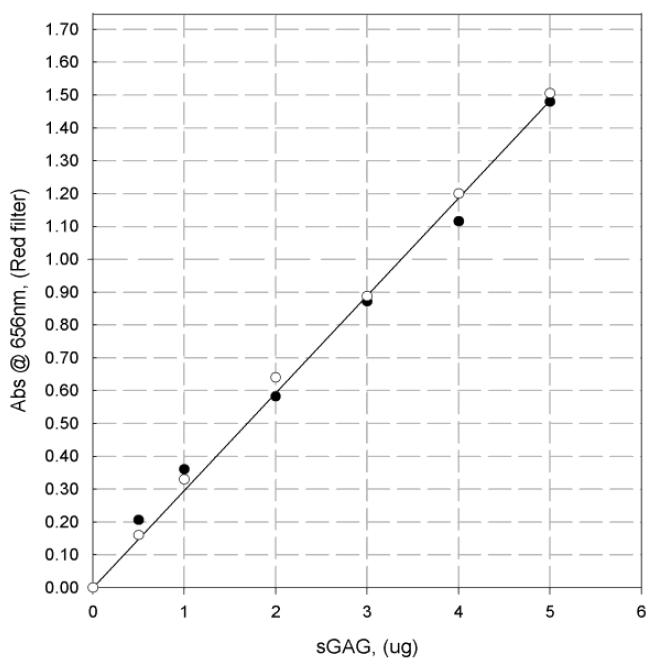Cat # changed from RBCB1000 to B1000
Type
Colorimetric assay
Description
The Blyscan Assay is a quantitative dye-binding method for the analysis of sulfated
proteoglycans and glycosaminoglycans, (sGAG).
Applications
Cell culture and/or animal studies, Urine, Synovial fluid, Tissue extract
Sample Requirements
10 – 100 µl
Shipping
At ambient temperature. Upon receipt, store the product at the temperature recommended below.
Storage/Expiration
All components are stable for one year, (from Invoice Date), when stored at 15–25ºC. Do not store below +4ºC. Once opened the glass vial containing sGAG standard should however be stored at +4ºC.
Calibration Curve
Calibration Range
1 – 5 µg
Limit of Detection
0.25 µg
Research topic
Extracellular matrix, Animal studies
Summary
The name for the assay was found using a computer based dictionary. Looking for three or more letters in sequence from ‘glycan’ we found ‘blyscan’. Blyscan is an Old English word meaning ‘to shine’ and from which the word ‘blush’, (blushing), may have been derived. This was an appropriate choice as the Blyscan Assay contains a blue dye which turns bright pink when it binds to sulphated glycosaminoglycans.
The Blyscan Assay is a quantitative dye-binding method for the analysis of sulfated proteoglycans and glycosaminoglycans, (sGAG). Test material can be assayed directly when present in a soluble form, or following papain extraction from biological materials. The assay can be used to measure the total sGAG content and can also be adopted to determine the O- and N-sulfated glycosaminoglycan ratio within test samples.
The dye label used in the assay is 1, 9-dimethylmethylene blue and the dye is employed under conditions that provide a specific label for the sulfated polysaccharide component of proteoglycans or the protein free sulfated glycosaminoglycan chains.
The assay is not suitable for small sulfated disaccharide fragments or for samples containing alginates, as these contain uronic acid.

